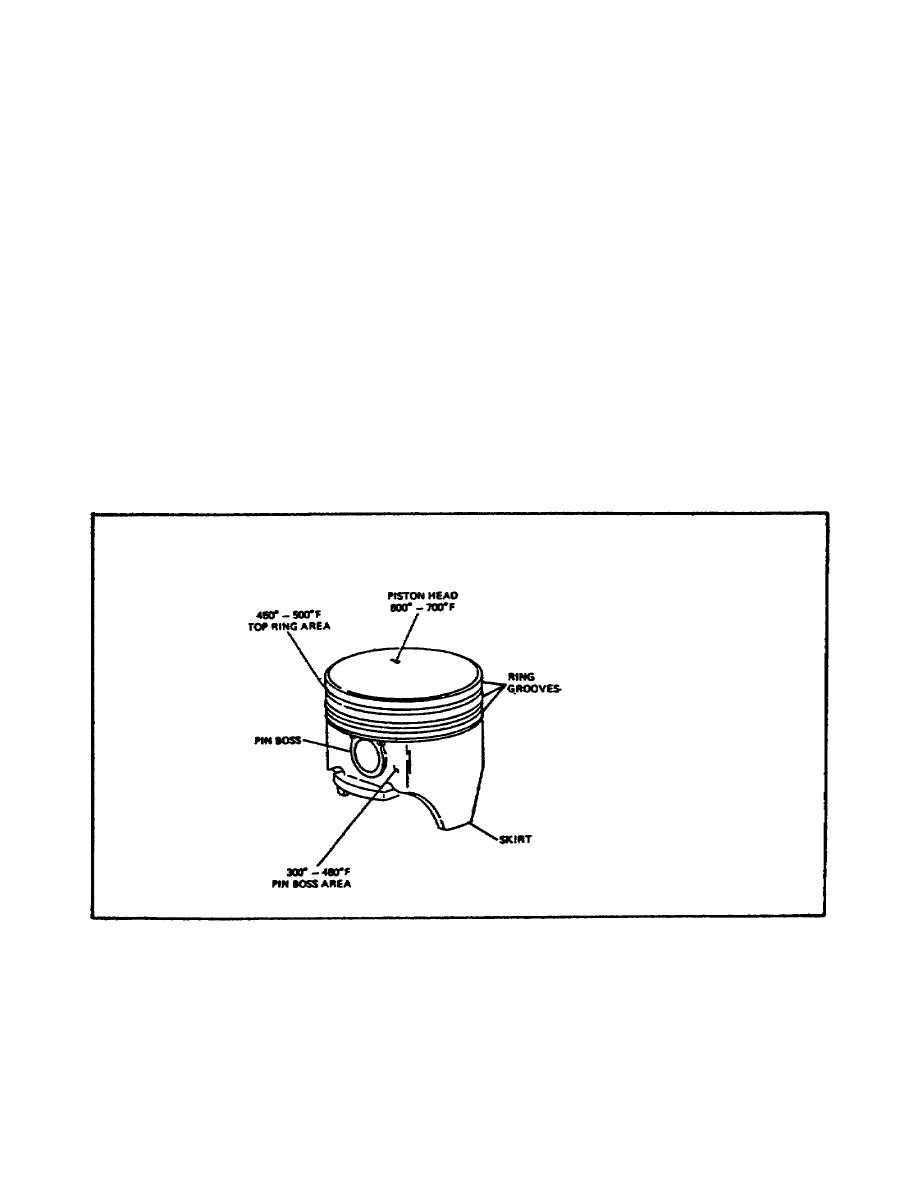
PRIN. OF INTERNAL COMBUSTION ENGINES - OD1619 LESSON 1/TASK 1
air mixture entering the cylinder must be relied upon to get rid of the burnt gases
in the cylinder from the last power stroke, there is some dilution of the mixture.
The mixing of the intake mixture with exhaust gases reduces the potential power
output. Also, with the inlet and exhaust ports opened together, a certain amount
of the fuel and air mixture is lost. There is also a much shorter period in which
the inlet port is open. These factors reduce the amount of power from each power
stroke.
(e) Advantage and Usage. The two stroke cycle engine is used almost
exclusively in very small equipment. It is lightweight and able to run at very
high speeds due to the absence of a mechanical valve train.
3.
Rotating and Reciprocating Parts
a.
Piston.
(1) General (figure 13). The piston is the part of both the two and four stroke
engines that receives the energy from the combustion and transmits it to the
crankshaft. The piston must withstand heavy stress under severe temperature
extremes. The following are examples of conditions that a piston must withstand at
normal highway speeds.
FIGURE 13. PISTON.
15





 Previous Page
Previous Page
